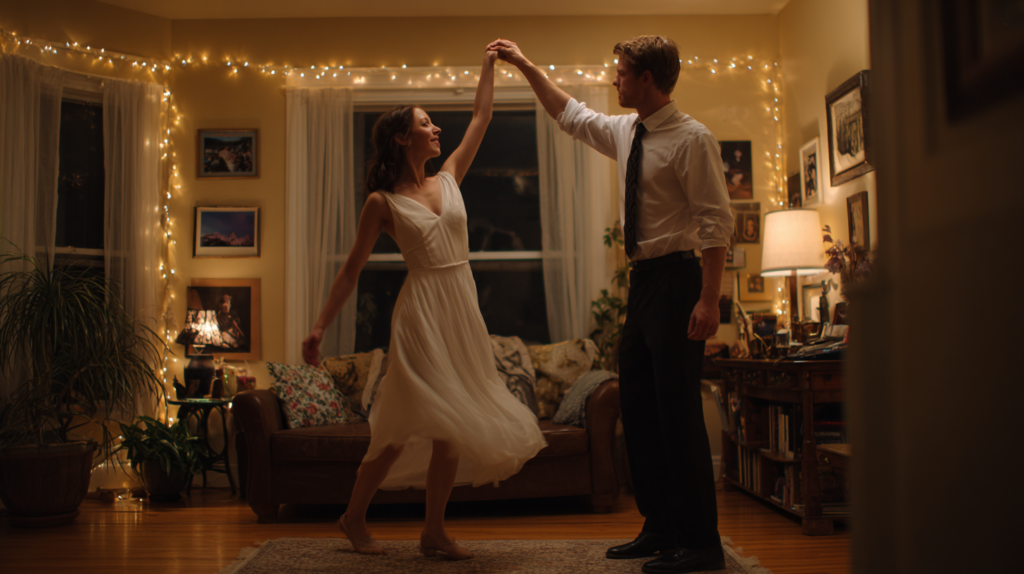Picture this: One of you grew up doing jazz ballet or salsa classes, while the other can barely manage a coordinated two-step. Sound familiar?
You’re not alone. One of the most common concerns couples bring to Wedding Dance Sydney is how to handle a wedding dance skill gap.
But here’s the truth — your first dance isn’t a competition. It’s a moment of connection. And when you approach it the right way, that gap in experience can actually work in your favour.
This guide shares how to balance differing skill levels, build confidence, and choreograph a routine that feels unified — no matter who’s been dancing longer.
1. Acknowledge the Difference (Without Letting It Define You)
The first step is simply recognising the gap without letting it cause tension.
-
It’s okay for one of you to be more experienced.
-
It doesn’t mean the dance will be unbalanced.
-
With smart choreography, both of you can shine — and feel comfortable doing it.
At Wedding Dance Sydney, we work with many “mismatched” couples and build confidence for both dancers from day one.
2. Play to Each Other’s Strengths
Rather than trying to “equalise” the skill level, let each partner shine in their own way.
For the experienced dancer:
-
Use your control and precision to guide, support and enhance
-
Avoid overshadowing with flashy moves — subtlety is often more elegant
-
Embrace the simplicity — it shows discipline and grace
For the beginner:
-
Focus on rhythm, posture, and connection
-
Choose movements that feel natural and repeatable
-
Celebrate progress, not perfection
Good chemistry always beats good choreography.
3. Keep the Routine Balanced and Cohesive
The trick is crafting a routine that flows — not one that showcases imbalance.
Our choreography solutions:
-
Mirrored movements that feel synchronised even with different complexities
-
Solo moments where the experienced partner adds flair while the other maintains grace
-
Transitions that allow for resets and reconnection
We create dances where both people look strong — because that’s how a first dance should feel.
4. Ditch the Fancy Footwork (Unless You Both Love It)
If complex moves cause frustration, they’re not worth it. Keep it simple and elegant.
Instead, focus on:
-
Slow turns and gliding steps
-
Clean lines and posture
-
Intimate moments — like handholds, eye contact and cheek-to-cheek sways
-
Well-timed dips (with support and practice!)
Simple doesn’t mean boring — it means stress-free, confident, and photogenic.
5. Practise With Patience (and Humour!)
Skill gaps often lead to tension if practice turns into critique. Keep it light.
-
Practise in short sessions (15–20 mins)
-
Celebrate small wins
-
Laugh at missteps (they make great memories!)
-
Don’t expect the same pace of progress — progress is still progress
We encourage “date-night” style lessons to keep the vibe fun, not forced.
6. Adjust Expectations and Remember the Purpose
This isn’t a stage show — it’s a shared moment in front of the people you love most.
Guests care far more about your smiles, emotion and connection than your technique.
Even if you’re not perfectly synchronised, a heartfelt routine can still be the highlight of the evening.
7. Consider a Dual-Style Routine (Optional)
If one partner really wants to show off their skills without pressuring the other, consider a split routine.
For example:
-
Start with a romantic slow dance together
-
Transition into a solo, freestyle, or fun “surprise” moment
-
End united in a final pose or movement
This keeps it entertaining and allows each partner to enjoy their moment — without feeling mismatched.
Conclusion
A wedding dance skill gap doesn’t have to hold you back — in fact, it can become one of the most beautiful aspects of your first dance. With the right attitude, choreography and instruction, both partners can feel confident, included, and fully connected.
At Wedding Dance Sydney, we design every routine around your abilities, personalities and vision — not a one-size-fits-all routine. Whether you’re the seasoned dancer or the total newbie, we’ll make your first dance feel like a perfect fit.
FAQ
This is common! The key is smart choreography and mutual support. We’ll design a routine that plays to both your strengths and keeps the beginner comfortable, confident and engaged.
Absolutely. Many couples we teach have never danced before. A simple, well-rehearsed routine can look elegant and connected — even without complex steps.
We choreograph routines that blend movements, timing and role changes to keep things visually balanced and enjoyable for both partners. You’ll both have moments to shine — together.
It depends! Sometimes, yes. But we also choreograph neutral roles or shared leads. What matters most is that you both feel comfortable and the connection feels natural.
Yes! Some couples start together and then branch into a fun solo or stylised section before finishing united. It’s a great way to embrace your differences and keep the routine interesting.
Not at all. Simple choreography can be challenging in its own way — especially when executed with grace. Plus, sharing the moment and supporting your partner makes it more meaningful.
It happens — especially when one partner feels pressured. Keep sessions short, fun, and encouraging. We guide couples through mindful, relaxed rehearsals to avoid tension and build confidence.
Yes. We adjust in real-time during lessons to suit your pace and comfort. There’s always an alternative move that will look just as good — or better!
All the time! At Wedding Dance Sydney, we tailor every lesson and routine to your dynamic — no matter how different your dance experience may be.
By practising together with a shared goal, using smart choreography and leaning into your connection. You’ll look united — even if your steps aren’t perfectly matched.
